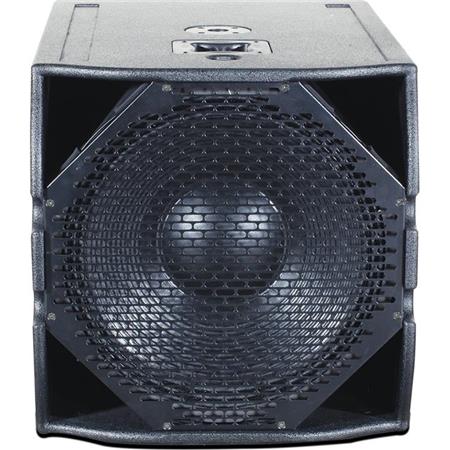Hey everyone,
I was reading a thread over at the parts-express site, and stumbled upon a curious idea - a dual-opposed subwoofer with dual ports.
Now the thread starter had revealed that the sub was motionless/without vibration up until 96-or-so db, at which point it began to have a little vibration when it was felt (The thread starter suggested that it may have been because of the ports themselves were resonating and moving)
As such, I was curious - is it sensible (in this or any scenario) to use the cabinet as part of the port? What I mean by that is in the fact that there are already three walls available, all one needs is too add a "top" plate of proper length to thereby finish all the walls of the port (By circumstance, this would have to be a rectangular/slot port).
My sense for this was that each "wall" of the port would be a part of the cabinet and essentially be acting as a larger brace for the whole thing, thereby (hopefully) reducing the effects of the ports vibrations, and the vibrations of the cabinet as a whole (bringing it back to the point of being without vibrations)
Hopefully, you guys can help me make sense of this idea (and if it's worth while...)
But I digress, much love/many thanks in advance everyone.
I was reading a thread over at the parts-express site, and stumbled upon a curious idea - a dual-opposed subwoofer with dual ports.
Now the thread starter had revealed that the sub was motionless/without vibration up until 96-or-so db, at which point it began to have a little vibration when it was felt (The thread starter suggested that it may have been because of the ports themselves were resonating and moving)
As such, I was curious - is it sensible (in this or any scenario) to use the cabinet as part of the port? What I mean by that is in the fact that there are already three walls available, all one needs is too add a "top" plate of proper length to thereby finish all the walls of the port (By circumstance, this would have to be a rectangular/slot port).
My sense for this was that each "wall" of the port would be a part of the cabinet and essentially be acting as a larger brace for the whole thing, thereby (hopefully) reducing the effects of the ports vibrations, and the vibrations of the cabinet as a whole (bringing it back to the point of being without vibrations)
Hopefully, you guys can help me make sense of this idea (and if it's worth while...)
But I digress, much love/many thanks in advance everyone.
1) Yes.1)I was curious - is it sensible (in this or any scenario) to use the cabinet as part of the port?
2)What I mean by that is in the fact that there are already three walls available, all one needs is too add a "top" plate of proper length to thereby finish all the walls of the port (By circumstance, this would have to be a rectangular/slot port).
2) Triangular corner ports do a better job of stiffening the cabinet and still only require a single piece of wood. The triangles can go in all four corners allowing the baffle to be only the size of the driver.
Yep, it's an extremely common arrangement actually.
You'll find that for a given simulated/calculated port length, a 3 cabinet wall slot port will produce a lower tuning than you would expect. The reason is that at the end of the port inside the cabinet, you'll still have 3 of the 4 boundaries that made the port remaining, and for a certain distance the air will continue to somewhat behave as if it is still part of the port.
To a lesser extent, this is also true on the outside of the port. A three wall slot port is necessarily on the edge of the cabinet, and if you place that edge with the port on the ground, the tuning will be lowered by a small but measurable amount.

This is the arrangement Art is referring to.
You'll find that for a given simulated/calculated port length, a 3 cabinet wall slot port will produce a lower tuning than you would expect. The reason is that at the end of the port inside the cabinet, you'll still have 3 of the 4 boundaries that made the port remaining, and for a certain distance the air will continue to somewhat behave as if it is still part of the port.
To a lesser extent, this is also true on the outside of the port. A three wall slot port is necessarily on the edge of the cabinet, and if you place that edge with the port on the ground, the tuning will be lowered by a small but measurable amount.

This is the arrangement Art is referring to.
Last edited:
"My sense for this was that each "wall" of the port would be a part of the cabinet and essentially be acting as a larger brace for the whole thing, thereby (hopefully) reducing the effects of the ports vibrations, and the vibrations of the cabinet as a whole (bringing it back to the point of being without vibrations) "
http://i56.photobucket.com/albums/g196/dkleitsch/CoePA-2009.jpg
These have a brace down the center of the port that braces the side wall too. The cone motion of the dual drivers gives rise to very little vibration, these cabints do not 'walk' at high power.
http://i56.photobucket.com/albums/g196/dkleitsch/CoePA-2009.jpg
These have a brace down the center of the port that braces the side wall too. The cone motion of the dual drivers gives rise to very little vibration, these cabints do not 'walk' at high power.
Last edited:
- Status
- This old topic is closed. If you want to reopen this topic, contact a moderator using the "Report Post" button.